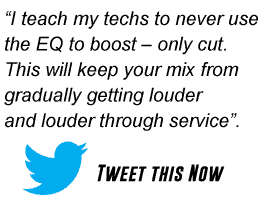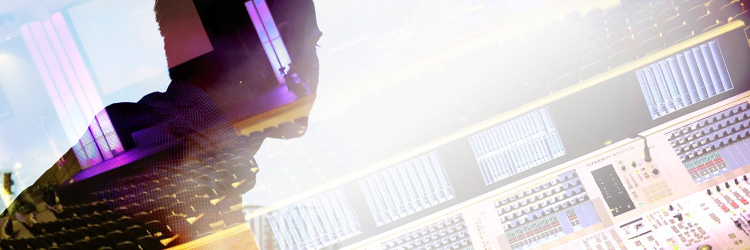Everyone makes mistakes, including the church sound tech. Whether you’re a seasoned sound tech or a bass player who was asked yesterday to run the board for your first time, you’ll probably make mistakes. Luckily, many of these mistakes can be avoided. In my travels around the country visiting churches and working with sound systems there are five tips I’ve developed for every church sound tech to keep in mind.
5 Mistakes Every Sound Tech Can Make and How to Fix Them
1. Not knowing your room
The first thing I do when I walk into a church sanctuary is put on some music I’m familiar with and walk across every single chair in the auditorium. While walking I listen for dead spots, echoing spots, loud spots, anything that’s out of the ordinary. This will show me how well the sound system is installed. If you can’t change the angle or location of your sound system, then you’ll have to know how to compensate your mix from the board. This is important because you want to deliver the most consistent sound to every seat. If you have a section of seats in the front that sound sharp or tinny you know not to add high end on the EQ.
2. Forgetting to listen to your mix
Most sound booths are in some far back corner far away from where the majority of sound is being represented. It’s crucially important to get up and listen to your mix in the room. If getting up yourself isn’t an option, ask someone with a good ear to go listen to the mix and see if it sounds good. So often what you hear in the sound booth is not an accurate representation of the sound in your room. I also recommend getting up on stage with your musicians while they are rehearsing and listen to their mix with them. So often musicians won’t know how to say what they want, but by going up and listening to what they have you’ll be able to give them a great monitor mix. It’s possible to do this with headphones or monitors, but it’s better to physically get up and go check things out both in the room and on the stage.
3. Overlooking gain
It’s okay, sometimes I do this as well. Every channel on every board relies on a solid gain structure for good sound. If a full out sound check isn’t possible, it’s necessary to at least run a line check and set up a quick gain structure. Once your gains are set they are the only thing during your service I would say are untouchable. By adjusting your gain mid service, you can throw off your house mix, your monitor mixes, and any dynamics, EQ or FX that are on that channel. So how do you set a good gain structure? Here are 4 quick steps:
1. Go through every channel one by one
2. Solo the channel on the board and have the musician play
3. Adjust your gain so that the meters on the board are reading as close to unity as possible (unity, 0, U, every board is different)
4. Drop your gain just below the unity mark, because musicians will ALWAYS play louder during an event than during sound check.
4. Mixing Priority
It’s important to note that there are just sometimes where you might just struggle to get sound out of the system. When this happens, focus on the big things first. In this priority:
1. Gain Structure
2. Solid mix, make sure you can hear every instrument
3. Tone, make sure every instrument sounds its best (by adjusting EQ and compression)
4. Effects, delays, reverb
5. Subtract, Subtract, Subtract, before you add
I’ve said it before and I’ll say it again. If there is one thing you take out of reading this article, this should be it: subtract before you add. In every arena of sound the temptation is to make things louder. Many times sound techs think they are mixing, but all they are doing is turning things up. When mixing and you notice it’s hard to hear the guitars, consider dropping the loudest instrument instead of boosting the guitars. This is especially the case when it comes to EQ. I go to the drastic point of teaching my techs to never use the EQ to boost – only cut. This will help to keep you mix from gradually getting louder and louder through service. It will also help to maintain clarity across the board.
There are many more tips and tricks when it comes to running sound. Every sound system is unique and behaves uniquely depending on the room it’s in. What tips or mistakes have you noticed from your tech team?

